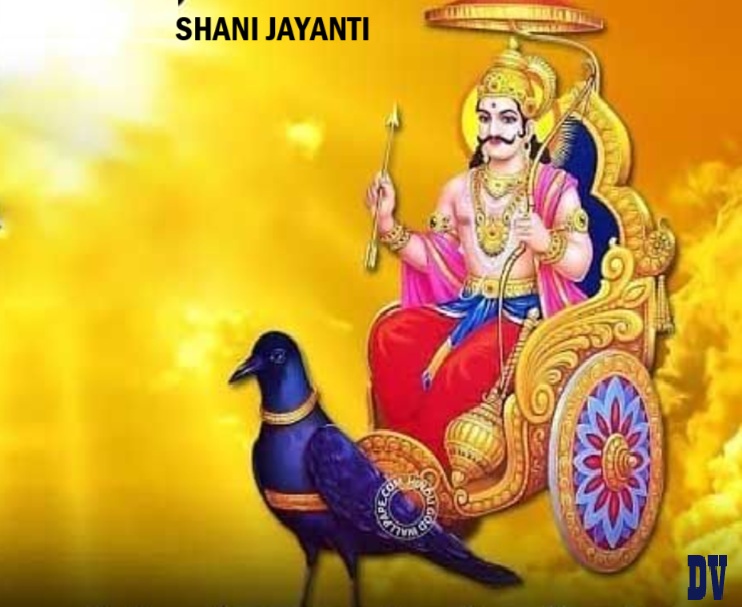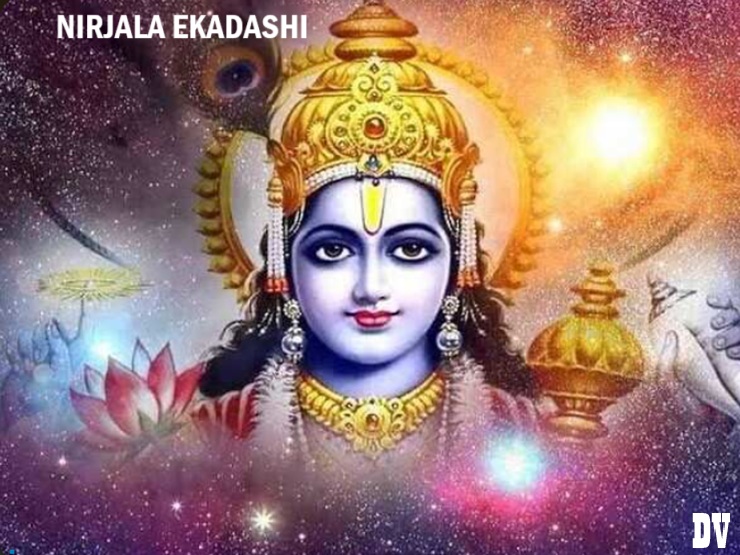Official Website : https://divinenewz.com/
INTRODUCTION
JYESHTHA month is the name of the third month in Hinduism, which is called Jyeshtha month in the lunar Hindu calendar. According to Hindu religion Vikram Sawant is the third month. The months of May and June are in the Gregorian calendar. Now in the language, the month of Jyeshtha is also called the month of Jet. According to the Hindu calendar, each month has its own importance, thus Jyeshtha month also has importance.
WHAT IS JYESTHA MONTH?
In the rich tapestry of the Hindu lunar calendar, each month holds a unique spiritual significance, shaped by its alignment with natural phenomena and divine symbolism. Among these months,
Jyeshtha (also spelled as Jyeshtha, Jyeshtha, or Jyeshtha) is particularly important. Falling during the scorching heat of Indian summer—typically between
May and June—
the Jyeshtha month is the third lunar month in the traditional Hindu calendar.
The word “Jyeshtha” means “the eldest” or “most senior,” and this name is deeply symbolic. Just as the eldest in a family is respected and looked up to, the month of
Jyeshtha encourages spiritual maturity, responsibility, and purification of the mind and body.
Let’s explore the meaning, origin, traditions, and important festivals that mark the Jyeshtha month, along with the astrological and spiritual relevance that makes it an essential period in the Hindu calendar.
MEANING AND ORIGIN OF JYESTHA MONTH
The name Jyeshtha is derived from the Sanskrit word
“Jyeshtha” (ज्येष्ठ), which means “the greatest” or “the eldest.” It corresponds to the Jyeshtha Nakshatra, one of the 27 lunar constellations, which dominates the sky during the full moon of this month.
The month of Jyeshtha comes after
Vaishakha and is followed by
Ashadha. It is a period of intense heat and dryness, often representing physical discomfort, but also symbolizing a time for inner austerity and spiritual discipline.
Jyeshtha or Jyēṣṭha (Sanskrit: ज्येष्ठ; Nepali: जेठ jēṭ; Assamese: জেঠ zeth; Odia: ଜ୍ୟେଷ୍ଠ Jyeṣṭha) is a month of the Hindu calendar. In India’s national civil calendar, Jyestha is the third month of the year. Known as Joishtho (Bengali: জ্যৈষ্ঠ Jyôishţhô) in Bengali, it is the second month of the Bengali calendar.
In the Hindu calendar, Jyeshtha month (also spelled Jyestha or Jyeshta) typically falls during May-June in the Gregorian calendar. It is the third month in the Hindu lunar calendar. For 2025, Jyeshtha Maas will likely
Start : Thursday, 13 May 2025
Month End : Wednesday, 11 June 2025,
Though dates may vary slightly based on regional Panchangs.
SIGNIFICANCES OF JYESTHA MONTH
Jyeshtha is considered a month of austerity, self-control, and service. As the heat is at its peak during this time, practices like water donations, fasting, and prayers hold great importance. Jyeshtha month is also known as Jeth month. Offering prayers to both Surya (Sun) God and Varun Dev during this month is believed to bring auspicious results.
1. Jyeshtha Month in the Hindu Calendar
The Hindu calendar is lunar-solar, meaning it takes into account both the
phases of the moon and the solar movements. Each lunar month is calculated from
Amavasya (New Moon) to Amavasya, or from Purnima (Full Moon) to Purnima, depending on regional traditions (Amanta vs Purnimanta system).
• In
North India, the month of Jyeshtha is calculated from
Purnima to Purnima.
• In South India, it is counted from
Amavasya to Amavasya.
Generally, Jyeshtha month falls between mid-May to mid-June in the Gregorian calendar.
2. Climatic and Natural Significance
Jyeshtha is one of the hottest months of the year in India. The blazing sun and dry winds represent the peak of summer. This heat not only challenges the physical body but also symbolizes the process of
inner purification.
The intense climate teaches lessons in:
• Endurance
• Simplicity
• Self-control
• Compassion (as people offer water and shade to travelers and animals)
JYESHTHA month has many spiritual and symbolic significances :
i) Purification and Discipline:
MAJOR FESTIVALS AND VRATS IN JYESHTHA MONTH
Jyeshtha is rich in religious and spiritual observances. Some of the most prominent are :
i) Jyeshtha Amavasya:
– Devotees offer water and food to their ancestors and seek blessings.
– Married women fast and tie threads around a banyan tree (Vat Vriksha), praying for the long life and well-being of their husbands.
– This Vrat honors Savitri, a legendary wife who brought her husband Satyavan back from the clutches of Yama (the god of death).

iii) Shani Jayanti:
– Devotees perform special pujas and seek relief from the adverse effects of Shani Dosha in their horoscopes.

iv) Ganga Dussehra
– Taking a dip in the Ganga or offering water is considered highly purifying on this day.
v) Nirjala Ekadashi
– “Nirjala” means without water. It is a strict fast where devotees abstain from both food and water for 24 hours.
– The fast is believed to yield the benefits of observing all 24 Ekadashis of the year.
vi) Jyeshtha Purnima
– It is also a day of performing Satyanarayan Puja, worship of Vishnu, and donating food and water to the needy.
vii) Sankashti Chaturthi
RITUALS AND OBSERVANCES DURING JYESHTHA MONTH
i) Charity (Daan):
– Setting up ‘Pyaus’ (water stations) in towns is a traditional act of service.
ii) Cooling Foods:
iii) Avoidance of Non-Vegetarian and Oily Foods:
iv) Daily Bathing and Offering Water to the Sun:
v) Tulsi Watering:

ASTROLOGICAL IMPORTANCE OF JYESHTHA MONTH
– The deity represents leadership, authority, and protection.
– Those born under this Nakshatra or influenced by it are often advised to perform special pujas in this month for spiritual upliftment.
– Worshiping celestial bodies like the Sun, Saturn (Shani), and performing Pitru Tarpan (ancestral offerings) are astrologically beneficial in this period.
SPIRITUAL PRACTICES FOR THE MONTH OF JYESHTHA
i) Meditation and Yoga:
ii) Reading Scriptures:
– Bhagavad Gita
– Shiva Purana
– Skanda Purana
– Stories of Savitri and Satyavan
iii) Seva (Service):
REGIONAL VARIATIONS IN JYESHTHA OBSERVANCES
i) North India –
Vat Savitri is celebrated on Amavasya.
i) Maharashtra, Gujarat –
Vat Purnima is observed on Purnima.
i) Tamil Nadu / Kerala / Andhra Pradesh –
The month is observed slightly differently due to the Amanta system.
HEALTH AND AYURVEDIA RELEVANCE
Ayurveda emphasizes keeping the Pitta dosha (heat element) in balance during Jyeshtha. Remedies include:
– Consuming gulkand (rose petal preserve)
– Applying sandalwood paste
– Avoiding overexertion and sun exposure
This aligns the physical discipline with the month’s spiritual objectives.
CHARITY AND COMPASSION
– Acts of charity (daan) such as distributing water, buttermilk, fans, umbrellas, and clay pots to the needy are encouraged during this month.
– Feeding birds and animals, planting trees, and setting up water stations reflect the spirit of seva (selfless service).
BALANCE OF MATERIAL AND SPIRITUAL LIFE
– It teaches that even during hardships (symbolized by the heat), one can uphold faith, morality, and generosity.
PREPARATION FOR THE MONSOON SEASON
– Spiritually, Jyeshtha serves as a transition from outer activity to inner reflection, much like the Earth preparing for renewal through rain.
LESSONS AND MESSAGE OF JYESHTHA MONTH
– Simplicity and Austerity: Live with minimalism and detach from material cravings.
– Selfless Service: Help others without expecting anything in return.
– Spiritual Growth: Take the heat as a metaphor for burning away impurities of the mind.
– The word Jyeshtha also implies seniority or elderhood. During this month, there is a cultural and symbolic emphasis on respecting elders, parents and senior members of society.
– Traditions like Vat Savitri Vrat and Vat Purnima Vrat, observed by married women for the long life of their husbands, reflect the values of loyalty, devotion, and family responsibility.
CONCLUSION
From observing powerful vrats like Nirjala Ekadashi, performing Pitru rituals, and worshipping Shani Dev and Ganga Mata, to understanding the virtues of Savitri’s devotion, Jyeshtha is a time to honor traditions, serve others, and align ourselves with dharma
As the eldest month in the spiritual sense, Jyeshtha inspires us to rise above the mundane and embrace wisdom, patience, and selfless living.
The Jyeshtha month is a deeply meaningful and sacred time in the Hindu calendar. Though physically demanding due to extreme heat, it is a period rich in spiritual opportunities, ethical teachings, and social responsibilities. Through its festivals, fasts, and rituals, it teaches us to live simply, serve selflessly, and worship sincerely.
It invites each of us to burn away ego, pride, and material excess, and instead embrace humility, devotion, and compassion—just as the sun burns brightly not for itself, but to give light and life to the world.
WRAPPING UP
It is a month that emphasizes austerity, discipline, and devotion, as the scorching summer heat serves as a reminder of detachment from material comforts and encourages inner purification.
You still have any question, feel free to ask me via comments or via email.
Don`t forget to share what you like here on Youtube, Facebook, Instagram with your friends and family.
At DivineNewz, a spiritual and temples news related information providers, is working on the project to work for religion and information about the temples to share with you to bring new ideas about spiritual and religious world.
Get in touch with DivineNews by contacting by divinenewz6@gmail.com
Visit : https://www.divinenewz.com
ARTICLE WRITTEN BY:
Divinenewz is a firm Working very proficiently for sharing the divinely knowledge, darshan and pilgrim details and many more in spiritual field. If you have any unique temple and divine place around the globe, then contact us at divinewisdom0608@gmail.com, divinenewz6@gmail.com, or
For more information, please visit:
https://www.divinenewz.com







3 thoughts on “JYESHTHA MONTH 2025 – Festivals, Rituals And Significances”